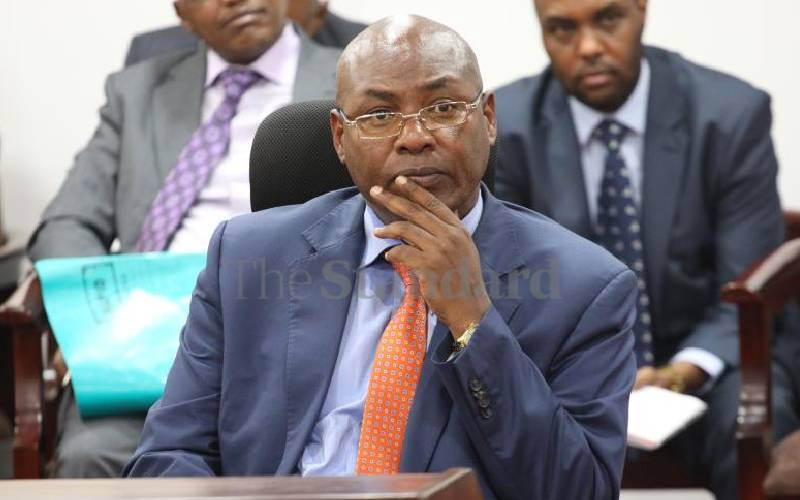 |
|
The East African Standard newsroom in 1966. |
By Joseph Karimi
When sending this article to the editor, I couldn’t help but marvel at how far we’ve come in improving telecommunications in the country. Click, click. Type, edit, compose, send. That’s how easy it is to send a story anywhere in the world today.
When I started out as a stringer for the East African Standard way back in August 1966, it was hard to gather and send news to Nairobi. It was only three years after independence and the telephone and road networks were skeletal. We used some quite unorthodox methods to get copy to the newsroom. As every reporter knows, your story is useless if it does not get to the editor in time.
In Nyeri where I was based, the rich, black soil can get really sticky when it rains. Back then, there were few paved roads, let alone any murram ones. Media houses had little or no infrastructure, including offices, out in the provinces. But it is the methods we used to send stories that amaze me when I look back.
Once I jotted down my story, I had to be in Nyeri town by 6.30am to send it. Before I bought my first Olivetti typewriter in 1967, I had to carefully handwrite my story so that copy takers in Nairobi could read it easily. Of course, in order to retain a copy of my raw story for future reference, I always used carbon paper.
I would then put it in an envelope and hand it to a matatu driver. If I gave the matatu driver Sh5, it was motivation enough to make him deliver the envelope to the newsroom on Standard Street near New Stanley Hotel (now The Stanley). I would do the same for the roll of film containing pictures I took with a Yashica camera I bought for Sh350.
Due to the haphazard manner in which the matatus and buses operated, my prized news items were sometimes delayed or lost altogether.
Unlike today, news gathering was a big hassle. While reporters today can file stories about events happening late in the afternoon, it was hardly possible in those days. These meant after collecting news during the day, I would write at night and send the following day.
On many occasions, events happening on Sunday would appear in the Tuesday or Wednesday paper. The media houses did not have strict rules about who one was allowed to send copy to, and I could therefore send the same story to both the Nation and the East African Standard.
Once your story was published, it was always wise to arm yourself with a ruler and measure its length.
The East African Standard paid Sh2.50 per column inch. Once you measured all your stories, you could easily estimate how much you’d earn per month. In a good month, I earned Sh500. I don’t remember ever making more than Sh1,000 in the 1960s.
But Sh500 was good money! For instance, a really good suit cost about Sh300. The good news was that one could pay for it in installments of Sh50 per month. And the quality was so good that a suit could last for up to five years!
Later, as telephone links became more reliable, it became easier to send stories by booking “reverse calls” to the newsroom. You informed the telephone operator that you wished the editor to call you. She or he called the editor, inquired if he knew you and once accepted, the company would be billed for the call. You were then put through to a copy taker. One read the typed story out loud and it was typed on the other end. But you were lucky if you got connected under 15 minutes. Sometimes, it took hours of endless dialing.
Even then, there was the small problem of European copy takers who could hardly decipher the accents of African correspondents.
Correspondents who were not well versed in Queen’s English, in the areas of intonation and pronunciation, suffered annoyance at the hands of the copy taker as they had to spell out English words they mispronounced.
Stay informed. Subscribe to our newsletter
Covering news was also a perilous exercise for journalists. There lacked well-established ways of protecting them, especially from some government officials who felt they could threaten or even control reporters.
I remember one incident in March 1970 that scared me to the core. I was assigned to cover the late President Jomo Kenyatta on a tour of Eastern Province. The President was to address rallies and lay a foundation stone for the Chogoria Methodist Hospital. So after a rally in Embu, we were to proceed to the hospital site the next morning.
I was quite green and probably took serious issues for granted. Since I had no vehicle to travel to Chogoria, I had to ask for a “lift”. I approached Provincial Commissioner Eliud Mahihu’s residence and saw the presidential security cars lined up and ready to move. The head of the team came by and I approached him seeking a ride in one of his many cars. I was carrying by box camera so he realised I was not a disruptive element.
He cast an angry look at me. Then I saw President Kenyatta leaving the PC’s house to get into his limousine. Security was tight. The man rushed towards me and ordered: “Get away or I’ll shoot you!” I was petrified and I fled. Eventually, I was able to take a bus to cover the event.
 The Standard Group Plc is a
multi-media organization with investments in media platforms spanning newspaper
print operations, television, radio broadcasting, digital and online services. The
Standard Group is recognized as a leading multi-media house in Kenya with a key
influence in matters of national and international interest.
The Standard Group Plc is a
multi-media organization with investments in media platforms spanning newspaper
print operations, television, radio broadcasting, digital and online services. The
Standard Group is recognized as a leading multi-media house in Kenya with a key
influence in matters of national and international interest.
 The Standard Group Plc is a
multi-media organization with investments in media platforms spanning newspaper
print operations, television, radio broadcasting, digital and online services. The
Standard Group is recognized as a leading multi-media house in Kenya with a key
influence in matters of national and international interest.
The Standard Group Plc is a
multi-media organization with investments in media platforms spanning newspaper
print operations, television, radio broadcasting, digital and online services. The
Standard Group is recognized as a leading multi-media house in Kenya with a key
influence in matters of national and international interest.








